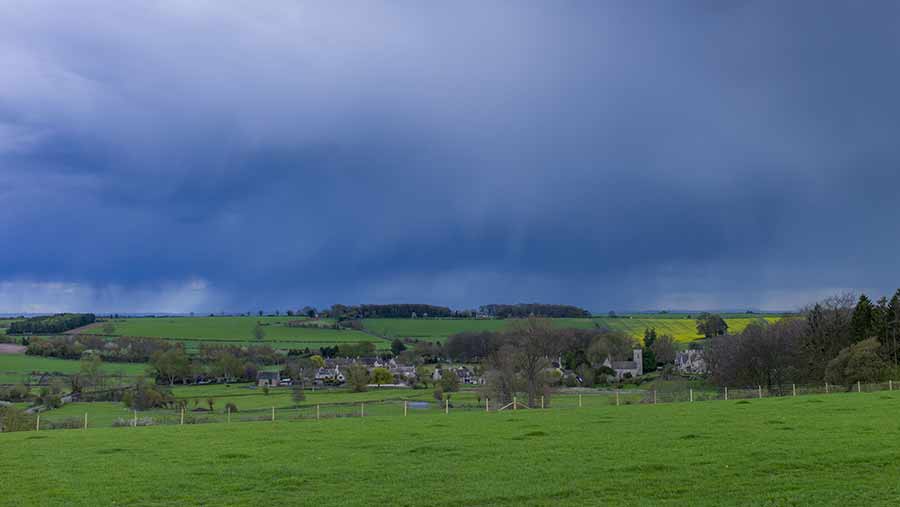UK farmland will be cheaper in 2020 than now, says Savills
 © Tim Graham/Robert Harding/Rex Shutterstock
© Tim Graham/Robert Harding/Rex Shutterstock UK farmland will be worth less in 2020 than it is now, according to the latest forecasts from Savills.
Farmland values are already starting to fall and even the most prime commercial units are seeing prices cool as a result of low commodity prices and uncertainty around EU membership.
Savills predicts that the average value across all farmland types will drop 4.1% in the next five years, from £8,100 in 2015 to £7,800 in 2020 (not adjusting for inflation).
The agents said it had downgraded its forecast (previously for land values to increase 6% by 2020) due to uncertainty around UK membership of the EU and expectations that agricultural commodity prices would remain low in the short-to-medium term.
Arable land values in the eastern counties of England, where values have been highest, had fallen this year, said Savills, while grassland values, which have lagged behind arable values, continued to increase.
Land still a ‘safe haven’
But Catherine Penman, rural research consultant, Carter Jonas, said land owners were under increasing pressure from servicing debt as a result of continuing low commodity prices and if this continued forced sales would increase supply at a time when demand was plateauing and becoming increasingly driven by tax reasons
“As a consequence, we forecast land values to soften.
“Despite this moderation, land remains a safe haven amongst the more volatile commercial and residential property sectors and is forecast to continue to outpace both sectors over a five–year period.”
Population pressures and climate change will push up prices again
Mark McAndrew, head of estate and farm agency at Strutt & Parker, said he thought the market had already fallen as far as it would go and next year would remain flat.
After 2017-18 he said prices would start to rise again because the underlying principles of world population growth set against a backdrop of climate change, had not gone away.
“If, as we suspect, the world harvest is affected [by climate change], those stockpiles will start to decline and then we might start to see more movement in commodity prices and that will in turn probably put more confidence in the farmland market and prices will start to recover.
“We think this correction has been caused principally by farmers having a very difficult time as a result of poor commodity prices and farmers are the biggest buyers in the market.”
‘Wrong’ to predict farmland prices
Tom Raynham, head of agricultural investments at Knight Frank, said prices had been “cooling off”, however there was no way to predict what land prices would be like in the next four to five years and it was wrong to try to do so.
Many factors could change in that time, said Mr Raynham, with uncertainty around commodity and oil prices, land supply and a possible exit from the EU, which he said would have the greatest impact on farmland prices in the short to medium term.
However, he said the UK leaving the EU and removal of farm payment support could push businesses to become stronger which in turn could push up farmland prices.
Land prices were very regional and a prime arable unit with irrigation that would have commanded prices of £15,000/acre earlier in the year, could now go for £10,000/acre to £12,000/acre.
However, he said there were still strong buyers in the market and if there was good competition land could go for more than the asking price.
